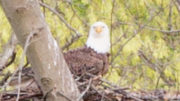If you haven’t already decided what type of tree you should have this year, there are many factors to take into consideration when deciding if a real tree or fake tree is the best option for your household.
Unfortunately the options are not so black and white, let’s explore:
Both [cut] real and fake trees leave a carbon footprint, leading to pollution:
Harvested trees typically take 8-10 years to grow to a desirable size, which is 8-10 years of water consumption and pesticide use – both of which can have a negative impact on the environment. On top of that, when the trees are disposed of after the holiday most of them end up in a landfill, decomposing very slowly and producing methane – a greenhouse gas. According to the US Environmental Protection Agency, methane has 25 times the potency of carbon dioxide.
Artificial trees are often made of materials that can be harmful during production. However, the trees may be less harmful to the environment only if they are utilized for at least 10 years in place of a harvested tree.
Out of the two options, the most environmentally friendly option would be to get a real tree from a local tree farm, where they likely will be more organic and not covered in pesticides. As opposed to going into a landfill, the trees should also be disposed of in a recyclable manner – being made into wood chips, for example.
If you’re not so worried about the environment then here are other factors to consider:
Artificial trees come in a variety of sizes, shapes, and colors – some even already partially decorated. They are generally easy to break down, set up, and store away and can be used for many years if stored properly (kept away from moisture and pest infestations).
Real trees require maintenance throughout the holiday season. Much like roses on Valentine’s Day, trees must also be watered at the base to keep from drying out too quickly. It’s inevitable that pine needles will fall off during the time the tree is in your home, and once they fall off they will dry out quickly and become sharp if not promptly swept up, for this reason daily vacuuming around the tree is recommended.
Other options:
A live Christmas tree can be used in place of a harvested or fake tree. Generally the tree will have to be much smaller than the standard 8-10ft tree in order for the roots to fit into a planter, however, there are many benefits to having a live real tree in your home.
A condensed list of benefits include:
- Reducing carbon dioxide levels
- Increasing humidity
- Reducing levels of certain pollutants, such as benzene and nitrogen dioxide
- Reducing airborne dust levels
- Keeping air temperatures down
Not only do live plants provide health benefits, if you don’t want to buy a live tree from a store you can use the opportunity to go hunting out in the woods for a tree which can be replanted at the end of the holiday season!
The least popular option is to have no Christmas tree. Some families have been decorating their other houseplants in place of the traditional Christmas tree.
Happy tree hunting!






Be the first to comment on "Real or Fake: Which Type of Tree Should Your Home Have?"